8 Ways to Tell a REAL Animal Sanctuary From a Roadside Zoo
Real sanctuaries are safe, comfortable places for animals to live after they’ve been rescued from not-so-nice places like circuses or laboratories. People can sometimes visit these sanctuaries, which is an awesome way to learn about and see animals without supporting businesses that hurt them, like roadside zoos or wildlife parks. Roadside zoos and wildlife parks use animals to make money. It’s confusing because they sometimes call themselves “sanctuaries” or “rescues” to bring in more customers, because they know that people don’t want to visit roadside zoos, but they’re being dishonest when they do that.
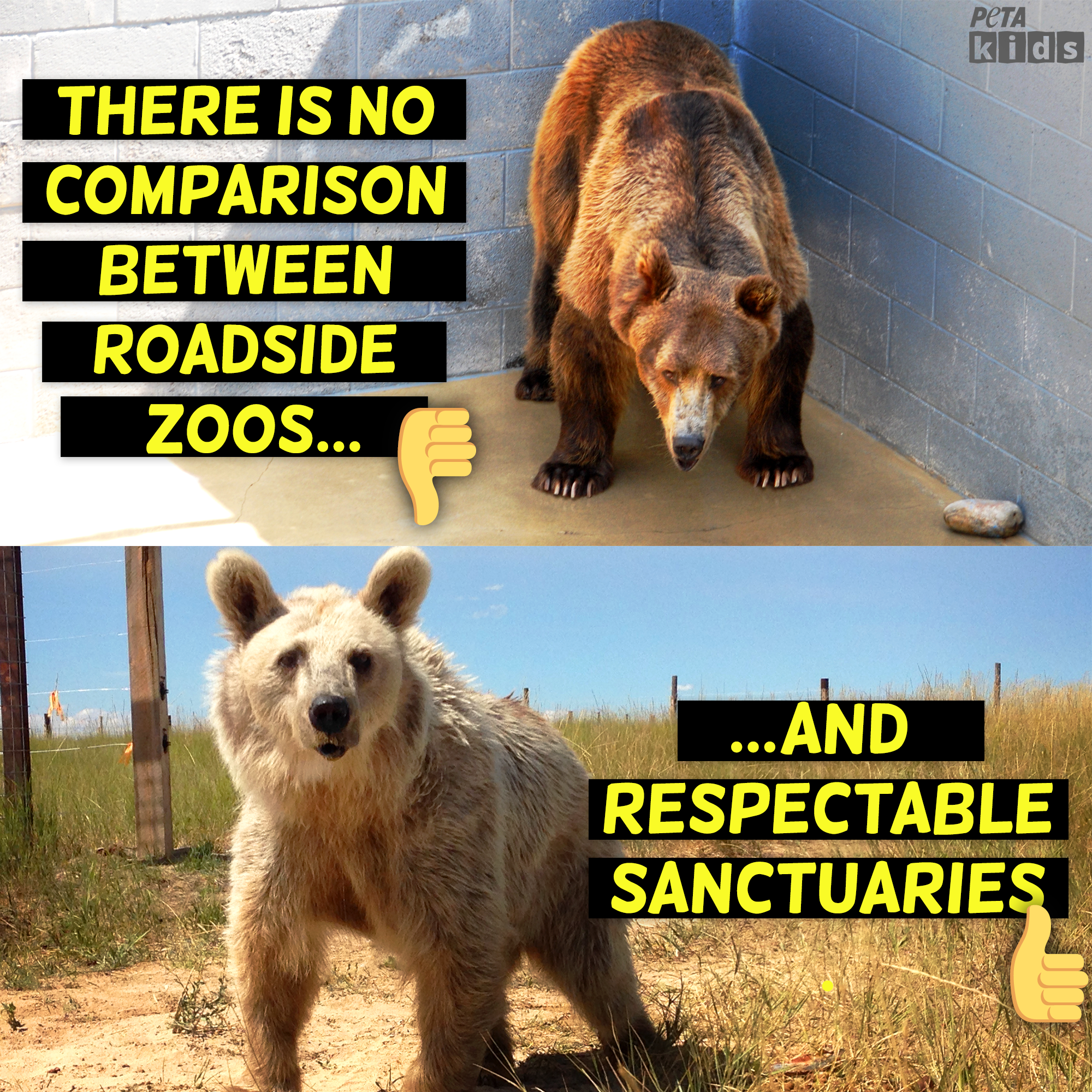
It’s important not to get these horrible places confused with actual sanctuaries. But how can you tell the difference? It’s easy! There are a few simple questions you can ask about a place to figure out whether it’s helping or hurting animals the animals who live there.
You can find answers to these questions by browsing a facility’s website and social media pages (your parents can help):
1. How are animals housed?
Real sanctuaries make sure that an animal’s living space is as close to their natural habitat as possible. Animals should live with others of their own kind so they can have friends. It’s mean to keep them all alone in small, dirty pens with concrete floors and nothing to do—and you should stay away from places like that.
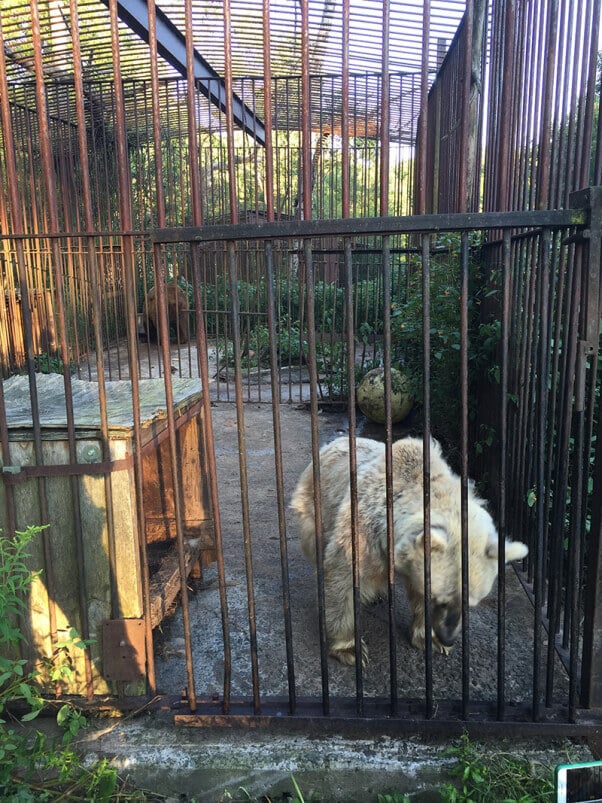
This cage isn’t a natural or comfortable place for a bear to live.
2. What kinds of activities do the animals get to do?
The animals’ living area should have lots of ways for them to play and enjoy themselves! For example, there should be a large structure for chimpanzees to climb on, water for bears to soak and splash in, and large fields for roaming and exploring. Animals need these things if they’re going to be healthy, happy, and comfortable.
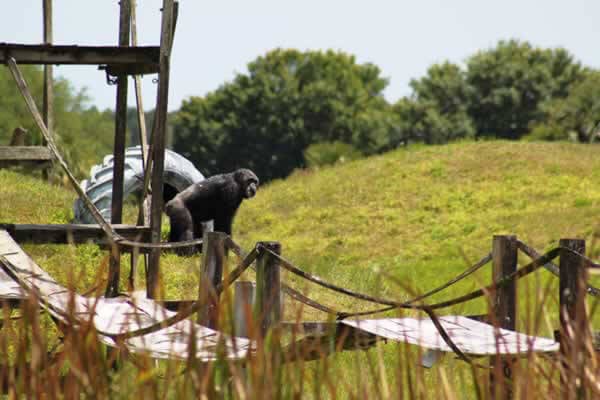 Save the Chimps
Save the ChimpsAnimals should also live with others of the same species so they can communicate with each another easily and form relationships and groups. In many sanctuaries, the animals who already live there help teach the newcomers how to get back in touch with their natural instincts and enjoy life again.
3. How big is the facility?
Animals should be given enough space to explore, roam, climb, and forage. And a real sanctuary NEVER takes the animals out of the facility to show them off.
4. Are visitors allowed to touch or hold the animals?
True wild-animal sanctuaries (with big cats, bears, primates, or wolves) NEVER allow visitors to touch or hold the animals, even babies, and that includes taking photos with them. This would be scary for the animals and dangerous to the visitors, too!
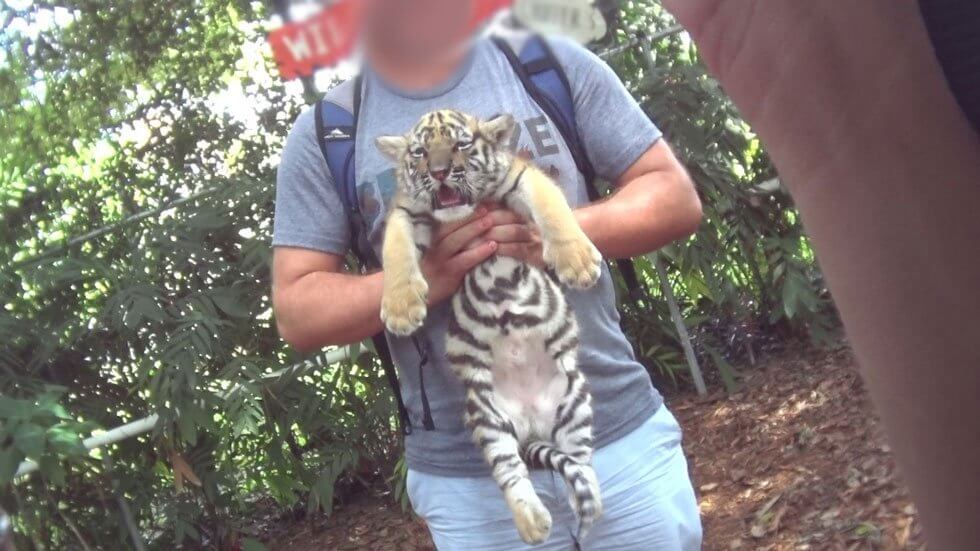
Holding wild animals and taking pictures with them is WRONG.
5. Where did the animals come from?
The animals who live there probably came from a place where they were mistreated, so they have a sad and painful past. The staff will want to share each animal’s story so that visitors can learn about the various places that hurt animals (like laboratories, circuses, and roadside zoos). Real sanctuaries provide animals with a permanent home for the rest of their life. They NEVER trade, borrow, or loan animals.
6. Does the facility breed animals?
Sanctuaries NEVER breed animals, meaning that they don’t make any of the animals have babies. Places that do breed animals are using them to make money—that’s not right, and that’s not a sanctuary.
7. What is it like to visit a sanctuary?
Most sanctuaries only allow very limited visits. Usually a guide takes people on a small tour of the place and doesn’t let them walk around by themselves.
8. Is it accredited?
True sanctuaries are accredited by the Global Federation of Animal Sanctuaries (GFAS), a group that makes sure sanctuaries follow strict rules to protect the animals who live there, like the ones listed above.
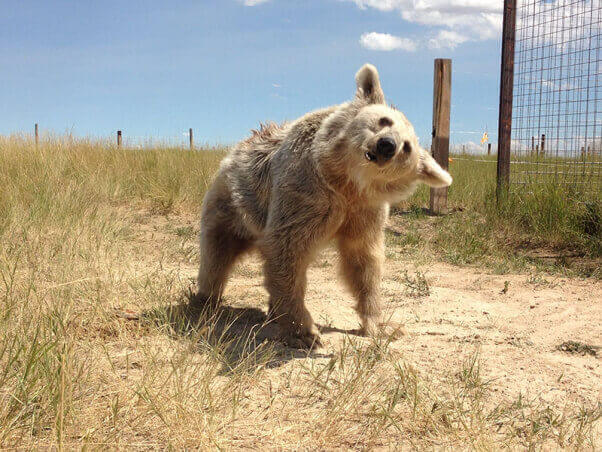
This bear is so happy to be in a REAL sanctuary!
*****
All living, feeling beings deserve a comfortable place to live where people aren’t always staring at them. A true sanctuary puts the needs and wants of the animals first. So if you care about animals, NEVER visit a roadside zoo or a wildlife park, and explain to your friends and family why places like that are bad for animals!





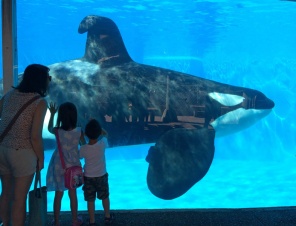

Under 13? Ask your parents bee-fore you continue!